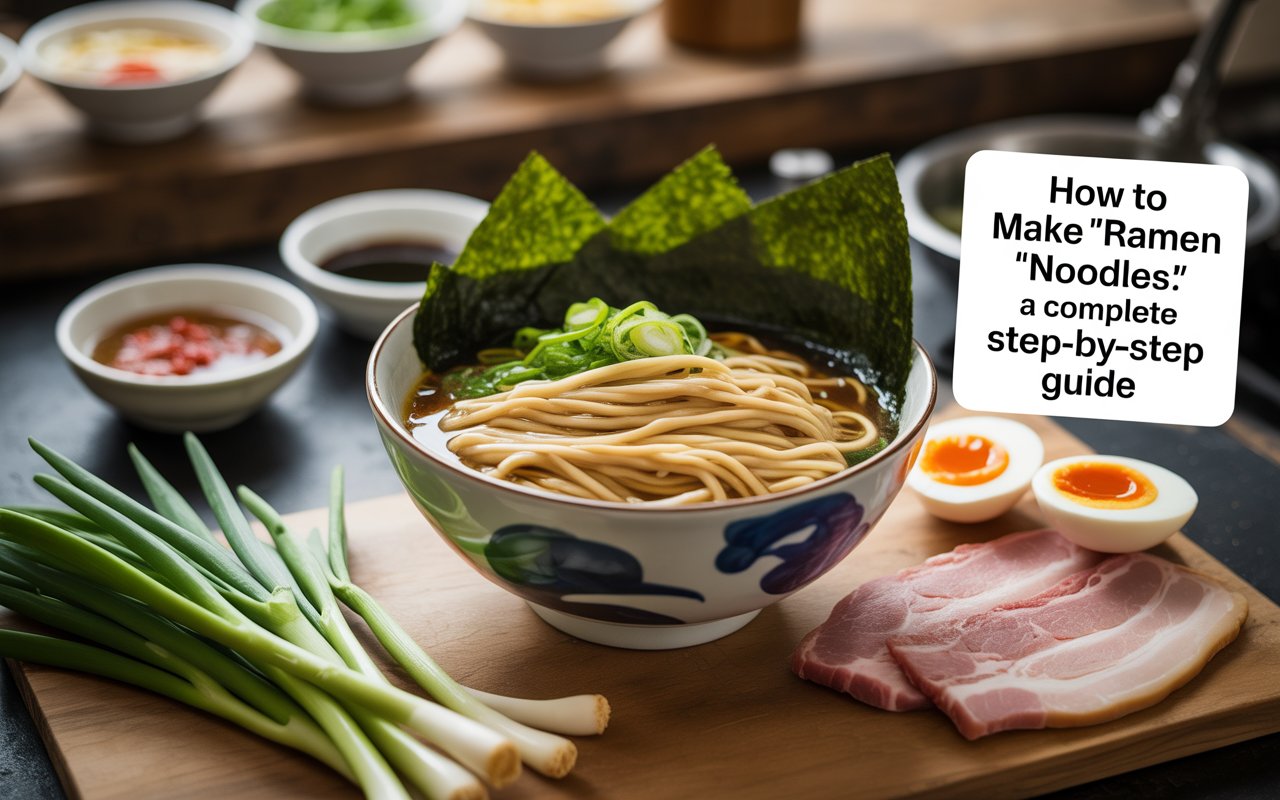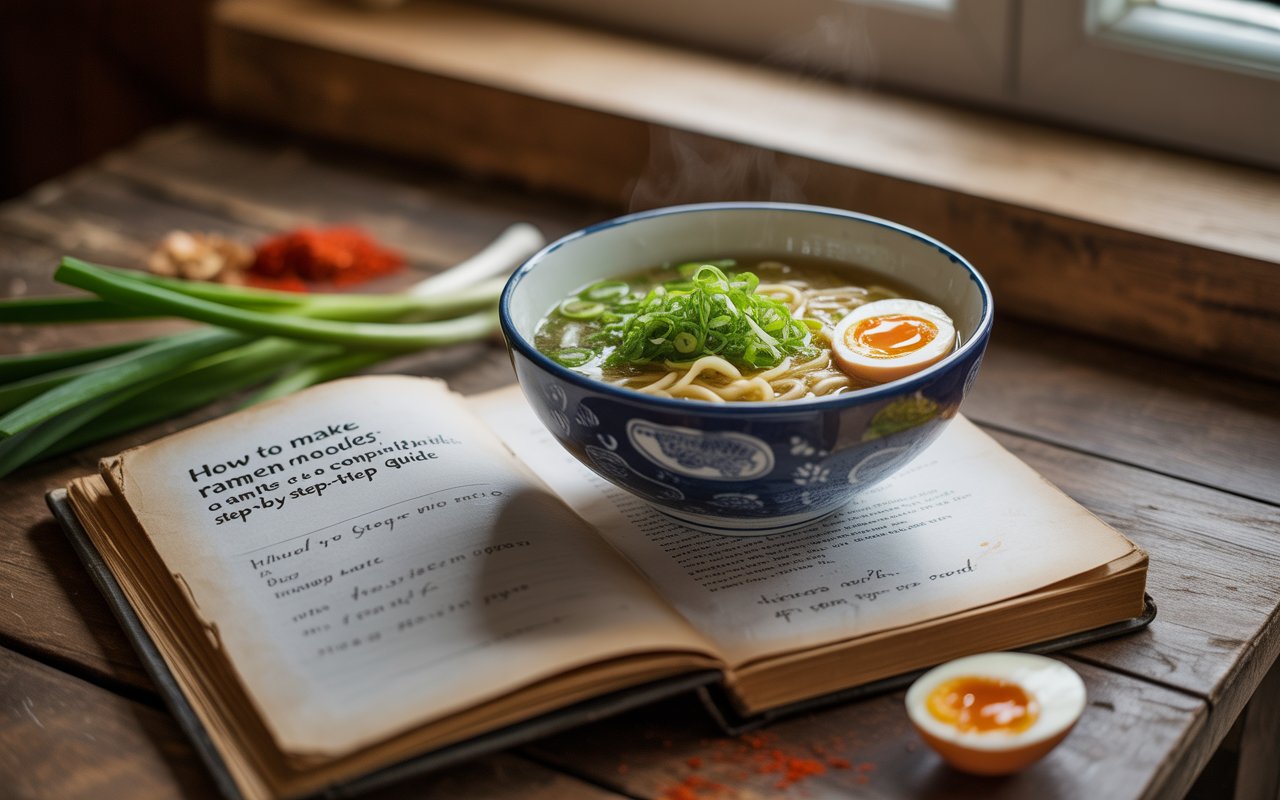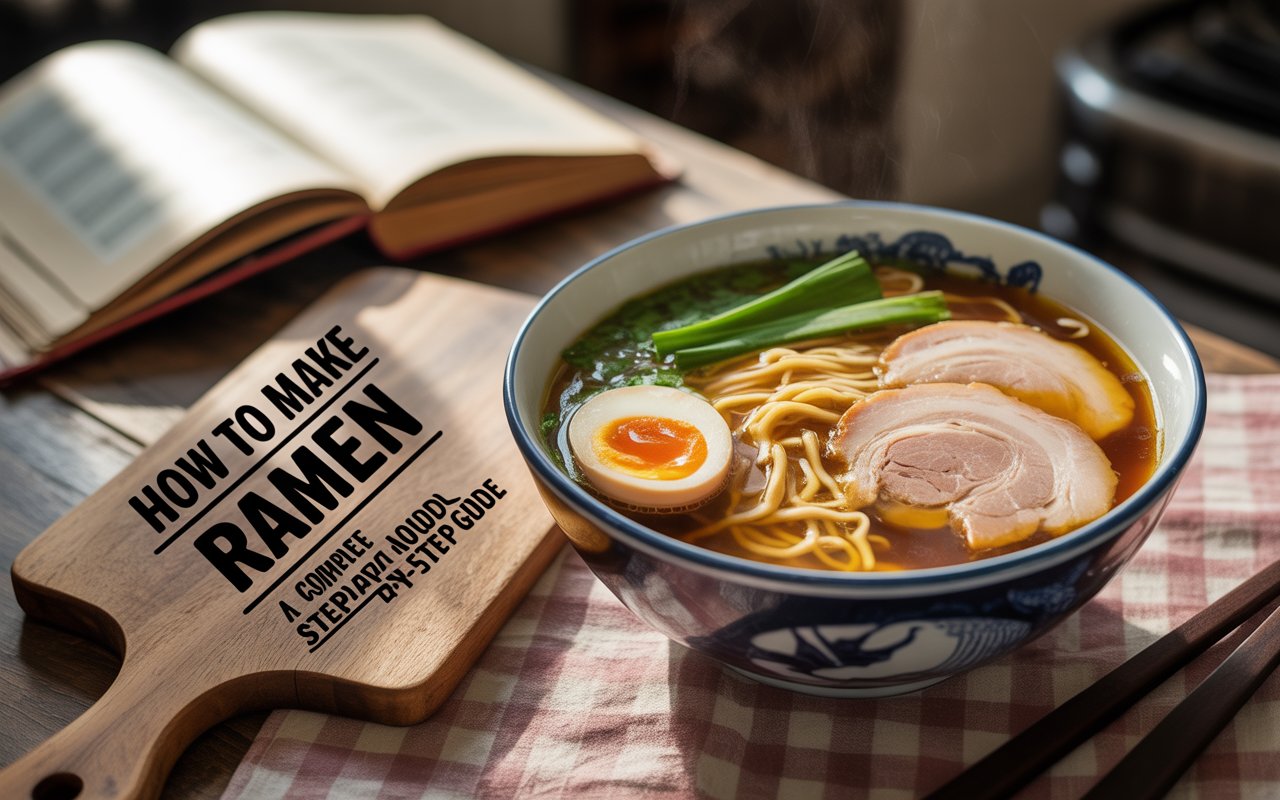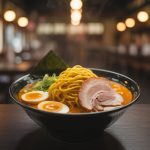Introduction
Who doesn’t love a warm, comforting bowl of ramen? Whether you’re craving something quick after a long day or looking to impress your friends with a homemade feast, ramen noodles have become a global favorite. But here’s the good news—you don’t have to settle for instant noodles every time. With a little patience and creativity, you can learn how to make ramen noodles from scratch and build a flavorful bowl that rivals your favorite restaurant.
Think of it like painting a masterpiece—each ingredient is a brushstroke that adds depth, flavor, and color to your final creation. Ready to learn the art of ramen? Let’s dive in!
What Are Ramen Noodles?
Ramen noodles are thin, wheat-based noodles traditionally served in a savory broth. Unlike pasta, they contain kansui (alkaline water), which gives them their signature chewy texture and slightly yellow hue. These noodles form the base of one of Japan’s most iconic comfort foods.
The Origins of Ramen
Ramen originally came from China but became a Japanese staple over centuries. Today, ramen is not just food—it’s culture. From quick street stalls to Michelin-starred restaurants, ramen has taken on countless forms, each unique in flavor and tradition.
Ingredients You’ll Need
To make ramen noodles from scratch, you’ll need:
-
All-purpose flour – the main base.
-
Kansui (alkaline solution) – key for texture and color.
-
Water – to bring the dough together.
-
Salt – to balance flavor.
For the broth and toppings, prepare: chicken bones, pork bones, miso paste, soy sauce, vegetables, boiled eggs, and your favorite garnishes.
Tools and Equipment for Ramen Making

Making ramen is easier with the right tools:
-
Mixing bowl
-
Rolling pin or pasta machine
-
Knife or noodle cutter
-
Large pot for boiling
-
Strainer for draining noodles
These simple items transform raw ingredients into slurp-worthy noodles.
How to Make Ramen Noodle Dough
-
Mix dry ingredients – combine flour and salt in a bowl.
-
Add kansui water – slowly mix until dough forms.
-
Knead – knead for 10–15 minutes until smooth.
-
Rest the dough – wrap it and let it rest for at least 30 minutes.
Think of kneading like building strength in your noodles—the more you work it, the better the texture.
Rolling and Cutting the Noodles
-
Roll the dough thin with a rolling pin or pasta machine.
-
Dust with flour to prevent sticking.
-
Cut into thin strips using a sharp knife.
-
Separate strands gently before cooking.
This step is where the magic happens—your dough transforms into noodles ready for broth.
Cooking Ramen Noodles Properly
-
Boil a pot of water.
-
Drop in noodles and cook for 2–4 minutes.
-
Taste-test for chewiness.
-
Drain and rinse briefly in cold water.
Remember, overcooked noodles lose their charm, so keep an eye on the clock.
Essential Ramen Broth Varieties

A great ramen bowl starts with a flavorful broth. Here are four classics:
-
Shoyu (Soy Sauce Broth): Light and savory.
-
Miso Broth: Rich and slightly creamy.
-
Shio (Salt Broth): Clear and delicate.
-
Tonkotsu (Pork Bone Broth): Thick, hearty, and creamy.
Each broth has its own personality—like different genres of music for the same instrument.
Flavorful Toppings for Ramen
Popular toppings include:
-
Chashu (braised pork belly)
-
Soft-boiled eggs with runny yolks
-
Nori (seaweed sheets)
-
Bamboo shoots
-
Green onions
-
Corn and butter (especially in Hokkaido-style ramen)
These toppings let you personalize your bowl to suit your taste.
Vegetarian and Vegan Ramen Options
Plant-based ramen is just as delicious:
-
Broths made from mushrooms, miso, and kombu (seaweed).
-
Toppings like tofu, spinach, roasted vegetables, and sesame seeds.
This proves ramen doesn’t need meat to be satisfying.
Common Mistakes to Avoid
-
Overcooking noodles.
-
Using weak broth without enough flavor.
-
Skipping resting time for dough.
-
Overloading toppings so flavors clash.
Avoiding these mistakes will keep your ramen balanced and delicious.
Tips for Perfect Homemade Ramen
-
Always taste as you cook.
-
Use fresh, quality ingredients.
-
Experiment with spices and seasonings.
-
Try freezing extra broth for quick future meals.
Cooking ramen is part science, part art—practice makes perfect.
Creative Ramen Variations

Ramen isn’t limited to tradition. Try:
-
Spicy ramen with chili oil.
-
Curry ramen with Japanese curry broth.
-
Cold ramen (Hiyashi Chuka) for summer days.
-
Fusion ramen like kimchi or taco-inspired bowls.
Your kitchen is the stage, and ramen is the performance.
Health Benefits of Homemade Ramen
Unlike instant ramen, homemade versions can be:
-
Lower in sodium.
-
Packed with fresh vegetables.
-
High in protein with eggs and lean meat.
-
Customizable to your health needs.
Homemade ramen lets you enjoy comfort food without guilt.
FAQs
1. Can I make ramen noodles without kansui?
Yes, you can substitute kansui with baking soda dissolved in water, but the texture won’t be exactly the same.
2. How long does homemade ramen broth last?
It can last 3–4 days in the fridge or up to a month in the freezer.
3. Can I use whole wheat flour for ramen noodles?
Yes, though it will change the texture and flavor, making it slightly denser.
4. What toppings are best for spicy ramen?
Chili oil, spicy miso paste, garlic, and sesame seeds pair well with heat.
5. Is homemade ramen healthier than instant ramen?
Absolutely. Homemade ramen uses fresh ingredients and allows you to control sodium and fat levels.
Final Thoughts
Making ramen at home may seem intimidating, but once you break it down, it’s like assembling a puzzle. Each step—making noodles, preparing broth, adding toppings—comes together to form a comforting, flavorful bowl. The best part? You can customize it endlessly to match your cravings. So grab your apron, roll up your sleeves, and start creating your own ramen masterpiece today.










